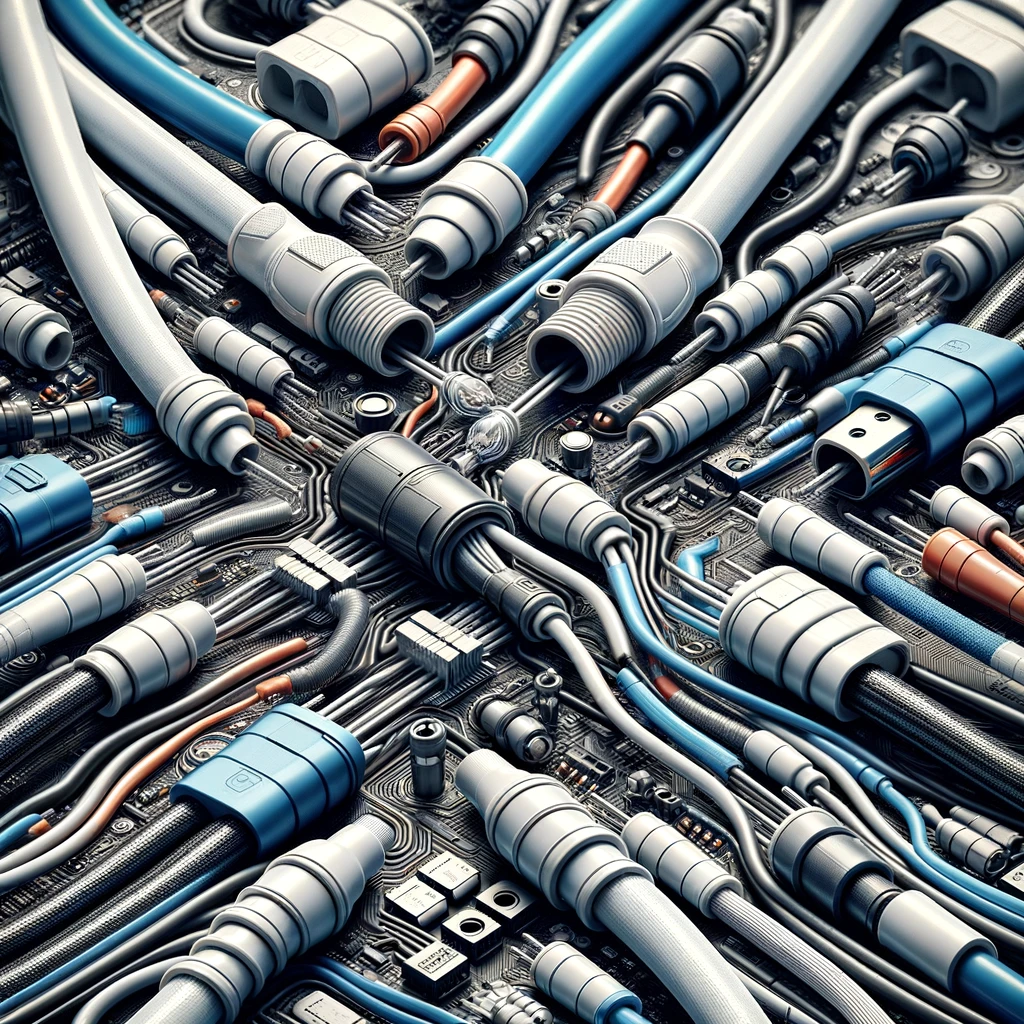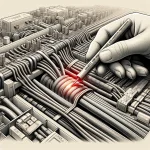As cable tie enthusiasts, it's crucial to grasp the significance of heat shrink wire protection. In this guide, we'll delve into what heat shrink wire protection is, its benefits, applications, and how it enhances cable management solutions.
The Basics of Heat Shrink Wire Protection
Heat shrink wire protection is a specialized tubing made from polyolefin, designed to safeguard wires and cables from environmental factors, abrasion, and wear. When exposed to heat, typically from a heat gun, the tubing shrinks tightly around the wires, creating a secure, protective barrier.
Heat shrink tubing comes in various sizes, colors, and shrink ratios to accommodate different wire diameters and application requirements. It's an essential component in electrical, automotive, aerospace, and marine industries, ensuring longevity and reliability in wiring installations.
Benefits of Heat Shrink Wire Protection
The advantages of utilizing heat shrink wire protection are manifold. Firstly, it provides insulation against moisture, chemicals, and extreme temperatures, preventing corrosion and electrical shorts. Additionally, it enhances the durability of wire connections, reducing the risk of damage from vibrations or mechanical stress.
Moreover, heat shrink tubing offers a professional finish to cable assemblies, neatly bundling wires and cables while maintaining flexibility for future maintenance or modifications. Its transparent variants allow for easy inspection of connections, ensuring proper installation and troubleshooting.
Applications of Heat Shrink Wire Protection
Heat shrink wire protection finds application in various industries and scenarios. In the automotive sector, it's utilized to protect and insulate electrical connections in engines, chassis, and wiring harnesses, enhancing vehicle reliability and safety.
Similarly, in the electronics industry, heat shrink tubing is indispensable for protecting delicate circuitry from moisture, dust, and physical damage. It's also widely employed in telecommunications, aerospace, and marine applications for its robustness and versatility.
Tips and Tricks for Effective Heat Shrink Wire Protection
1. Choose the Right Size
Selecting the appropriate size of heat shrink tubing is crucial for ensuring proper protection and a secure fit around your wires. Using tubing that is too small may not provide adequate coverage, while oversized tubing can lead to a sloppy installation. Take the time to measure the diameter of your wires accurately to choose the best-fitting tubing for your application.
2. Proper Preparation
Before applying heat shrink tubing, it's essential to prepare your wires properly. This involves cleaning them to remove any dirt or debris and trimming them to eliminate sharp edges or protrusions. By ensuring a clean and smooth surface, you promote better adhesion of the tubing and reduce the risk of abrasion or damage to the wires.
3. Use a Heat Source Correctly
When applying heat shrink tubing, it's vital to use the heat source correctly to achieve optimal results. Whether you're using a heat gun or a shrink oven, ensure that you apply heat evenly to the tubing. Avoid overheating, as this can cause the tubing to melt or shrink unevenly, compromising its effectiveness in protecting your wires. By following proper heating techniques, you can achieve a tight seal around your wires, enhancing their durability and longevity.
4. Layering for Added Protection
In situations where extra protection is needed, consider layering heat shrink tubing. Layering involves applying multiple layers of tubing to provide additional insulation and reinforcement to your wires. This technique is particularly useful in high-stress environments or areas where wires are exposed to harsh conditions. By layering heat shrink tubing, you can enhance the resilience of your wiring installations, reducing the risk of damage and ensuring long-term reliability.
5. Color Coding
Take advantage of the variety of colors available in heat shrink tubing to implement color coding in your wiring installations. By using different colors for different circuits or connections, you can easily identify and differentiate between them. This simplifies troubleshooting and maintenance tasks, as you can quickly identify the relevant wires without the need for extensive labeling or documentation. Incorporating color coding into your wiring setup enhances organization and efficiency, making it easier to manage and maintain your electrical systems.
Pitfalls to Avoid in Heat Shrink Wire Protection

1. Choosing Incorrect Sizes
Avoid the mistake of selecting heat shrink tubing that is either too small or too large for your wires. Using undersized tubing may not provide adequate protection, while oversized tubing can lead to a sloppy and ineffective installation.
2. Neglecting Proper Preparation
Skipping the step of properly preparing your wires before applying heat shrink tubing can result in poor adhesion and potential damage. Ensure you clean and trim the wires to create a smooth surface for the tubing to adhere to, preventing issues such as abrasion and insulation failure.
3. Overheating
Be cautious not to overheat the heat shrink tubing when applying heat. Overheating can cause the tubing to melt or shrink unevenly, compromising its effectiveness in protecting your wires. Follow proper heating techniques to achieve a tight and uniform seal without damaging the tubing or wires.
4. Ignoring Layering Opportunities
Failing to consider layering heat shrink tubing in areas that require extra protection can leave your wires vulnerable to damage. Take advantage of layering techniques in high-stress environments or where wires are exposed to harsh conditions to enhance their resilience and longevity.
5. Disregarding Color Coding
Neglecting to use color coding in your wiring installations can lead to confusion and inefficiency during maintenance and troubleshooting. Utilize different colors of heat shrink tubing to easily identify and differentiate between circuits and connections, streamlining your electrical management processes.
Wrapping Up
In conclusion, heat shrink wire protection is a fundamental component in cable management, offering durability, insulation, and professional aesthetics. Whether in automotive, electronics, or industrial settings, its versatility and reliability make it indispensable for safeguarding wiring installations.

